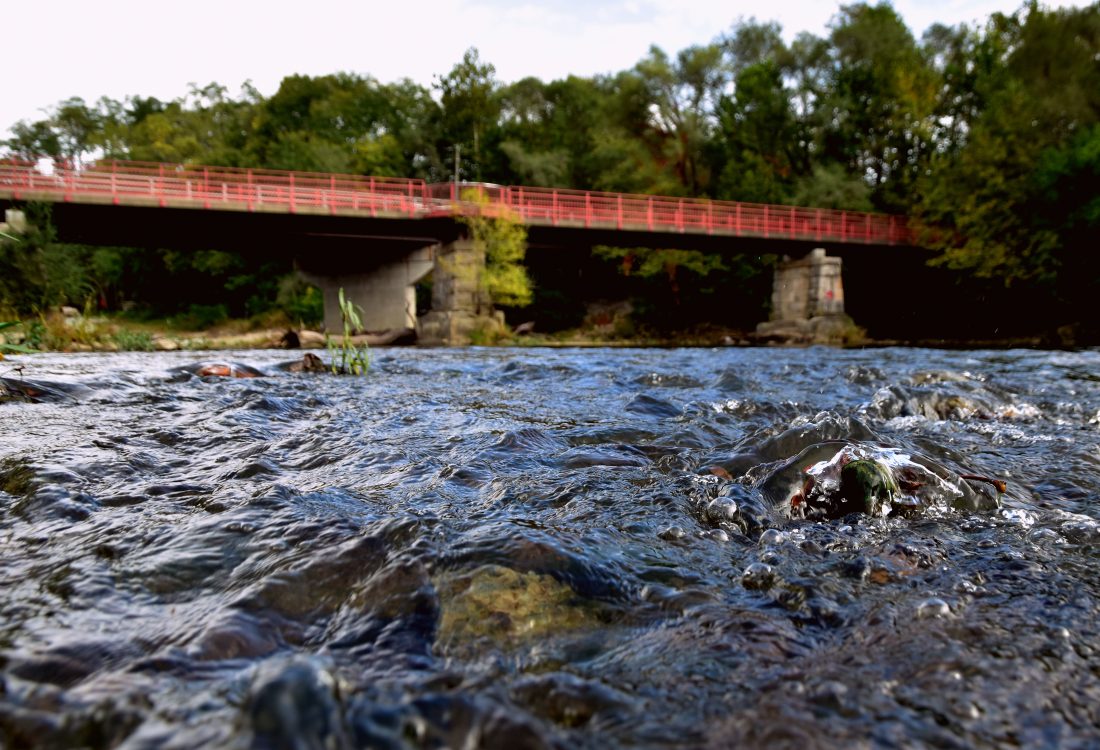Water Quality Information
A cleaner river for all.
Water Quality History
Before European settlement of Indiana, the White River ran clear and cool through a nearly impenetrable hardwood forest. As towns and cities developed along the White River and row crop agriculture came to dominate rural areas of the watershed, the river and its surrounding landscape dramatically changed. The river was used as conduit to move waste away from the communities. Over the years, the cities grew and became more industrialized, which led to the discharge of many chemicals and other pollutants into the river. Likewise, the advent of tile drainage, turned wetlands into productive farmland and the tile drains discharged ‘unwanted water’ (and its associated agricultural pollution) into the river and its tributaries. Such development pressure and habitat loss and degradation led advocacy organization American Rivers to name the White River as one of the nation’s most threatened rivers in 1996 and 1997.
Water pollution went largely unchecked until the 1970’s when the Clean Water Act was passed which established the basic structure for regulating discharges of pollutants into the waters and set water quality standards. In subsequent years (with the major exception of a criminal toxic chemical discharge that killed 4.6 million fish in 1999), the water quality in the White River has slowly improved with restrictions on direct discharges and better technologies and processes to reduce environmental impacts from industrial and sewage treatment plants. This work continues today with efforts to eliminate or reduce combined sewer overflows like the DigIndy tunnel system. However, “nonpoint source pollution” like urban stormwater and agricultural runoff continue to carry excess fertilizers, pesticides, bacteria, oils and road salts into the river from widespread areas. These diffuse sources are harder to regulate and control, so they still pose a significant threat to our water quality.
Current Water Quality
Through most of the 58-mile stretch of the White River through Hamilton and Marion Counties, the river does not meet state water quality standards for swimming or recreational use, which is why we always recommend “feet, not face” when touching the river. The one place where the river DOES meet EPA swimming standards: from the northern edge of Broad Ripple Park at about 67th Street to Oliver’s Woods just north of 82nd Street in Indianapolis. And like most streams in Indiana, the Indiana State Department of Health has issued fish consumption advisories to limit the number of fish they advise eating. You can learn more about the health of any waterway in the nation through the EPA’s How’s My Waterway tool.
River Pollutants
There are three major types of pollutants in the White River, each with different sources and challenges in keeping them out of the river.
PCBs are legacy chemical pollutants, meaning they entered the ecosystem long ago but haven’t left, accumulating in sediment and fish tissue. They were banned in the U.S in 1979. Today they can be released into the environment from hazardous waste sites; through illegal or improper dumping of industrial wastes and consumer products; from leaks in old electrical transformers; or during the burning of some wastes in incinerators. PCBs are often a key reason for fish consumption advisories.
Nutrients like nitrogen and phosphorus can create algae problems and deplete oxygen for aquatic life. Nutrients can come from fertilized cropland and lawns, animal manure and pet waste, failing septic systems, wastewater treatment plants, and even naturally from the atmosphere (for nitrogen) or eroding soil (for phosphorus). Planting native plants that don’t require fertilizers, and minimizing fertilizer use in general, are ways you can reduce your contribution to nutrient pollution.
E. coli Bacteria is a common bacteria that can come from runoff from agricultural or urban lands as well as failing septic systems and combined sewer overflow outlets after heavy rains. If ingested, E. coli can make you sick, which is why we say feet, not face, when engaging with the water! Proper disposal of pet waste is one way you can reduce your contribution to E. coli pollution.
Coal Ash Risk
When coal is burned to create electricity, the leftover ash can contain toxic elements like arsenic, selenium, lead, mercury, and chromium. Typically this waste material is buried in a landfill or mixed with water and stored in ponds near the power plant. Some ponds are unlined, and the toxic materials in them could be at risk of leaching into groundwater or being washed into waterways during a major flood.
Indiana has more of these ponds than any other state in the country, and two of these coal ash sites are located along the White River in Central Indiana: Duke Energy’s Noblesville plant and AES’s Harding Street plant. While both plants no longer burn coal and produce ash, the ponds and landfills that remain are a threat. The power companies, state and federal environmental regulators, and the environmental community continue to work toward permanent solutions for the coal ash challenge.
More Information
In waterways, like the White River, with impaired designated uses, regulations require the development of a “Total Maximum Daily Load (TMDL).” A TMDL determines pollution reduction targets and regulates the amounts of a pollutant allowed to enter a waterbody. TMDLs help guide various watershed restoration initiatives through programs like Section 319 and its associated Watershed Management Plans.
Learn more about the White River’s TMDL here.
Current River Conditions
The White River Alliance maintains a webpage with current water level in various locations and water quality risk levels due to pollution.

Water Quality Regulatory Partners
The primary authority on water quality regulation is the Indiana Department of Environmental Management (IDEM). IDEM develops water quality rules, guidance, policies and procedures; assesses water quality; regulates and monitors water supplies; protects watersheds and wetlands and provides assistance to the regulated community and the public.
Other key water quality partners include the Indiana Department of Natural Resources, County Health Departments which monitor water quality for public safety, USGS which collects water quality and flow data, and Universities that collect water quality data for specific research purposes. Nonprofit organizations like the White River Alliance are also a partner through hosting an advanced volunteer water quality sampling program, which you can get involved here!
